Like a lot of folks, I’m sure, B2 and I began as a fling. We were summer associates (or, baby interns) at our future Manhattan law firms, about to head back to our last year of law school; I was about to spend half of it in Hong Kong, and he was staying in Boston, and we had no idea where we were headed as a couple (and, wait, were we a couple?) But then, sitting on a patio at an Italian restaurant in the East Village on one of our first actual dates, I asked B2 over a plate of squid ink spaghetti where he saw himself in five years. Still in New York, or somewhere else? (I did not win any awards for creative early-dating conversation.) Somewhere closer to home, he told me. Maybe not Hawaii just yet, but California would be nice. Just to be closer to family. I remember this answer so clearly, because I saw myself in California, too; I wanted to be closer to my family, too. It was the first time we talked seriously about the things we cared about, family most of all, and to hear him say that something mattered to him that also mattered so much to me was when our nascent relationship began to feel real. (Also, the thought of eventually moving to Hawaii did not hurt.)
Four years later, in a rare case of Things Actually Going According to Plan, here we are in California. In the same way that we both valued our families, B2 and I have, implicitly, always wanted a family of our own — so it’s fitting that our tiny B3, currently hiccuping somewhere around my right hipbone, was what finally made us move closer to our families like we both planned to years ago. Every month that went by in New York made it harder for us to imagine really taking the bar again and really starting new jobs (or, in my case, just a new office) and really moving all the way across the country, even though B2 was at a firm that consumed almost all his waking hours, even though New York often didn’t feel sustainable. And then this little being came along, and finally woke us up from the inertia of the flawed but familiar. B3 would have been something to celebrate no matter when he came along, and the indescribable happiness that he has brought so far is, I’m sure, only a little bit of what is to come. But, on top of all that, he’s also the reason we followed through on plans that we wanted all along to follow; he has buoyed us through the stress of our old jobs and the transition to our new ones, all the things that come with uprooting ourselves and moving to a city we hardly know, and he doesn’t even know it yet.
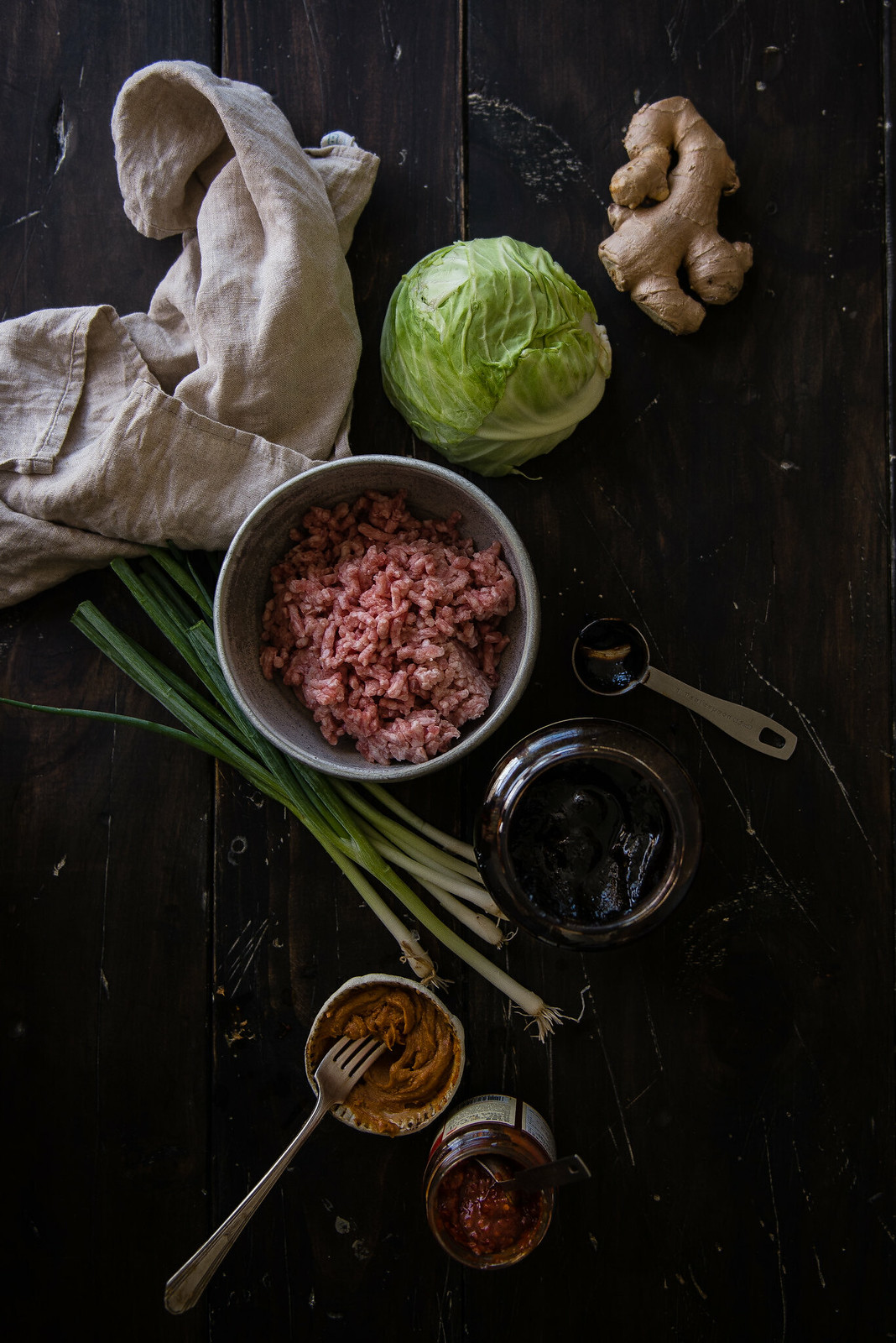
And still, as convinced as we are that this little one is the best thing that could have happened to us, an unexpected nostalgia has made its way in. I know this is common, and I’m far, far from the first person to have felt it, but it’s an odd set of feelings to juggle. We’ve been so elated at the thought of B3, and he’s been the herald of so many good things even other than his little self, that I think I’ve been wont to forget how good we did have it even before he came along. I recognize I’m growing horribly sappy (and I’m aware I may be the only one reading this, at this point), B2 is, after all, my favorite person. On quiet nights with him on the couch, or in bed a lazy hour after we should have gotten up in the morning, I’ve been a little more wistful lately for this “just us” time, these moments when I don’t yet have to share him with anyone else. It reminds me that, although we’ve always wanted this little family, that we do love this other life, the one with outdoor patio dates and ruminating about where we’ll be in five years.
So, both to soak up the remaining time we have as just two red bowls, but to celebrate our mini-bowl, too, I wanted to make something that I thought summed up the two of us. These two recipes are different, but related, halves of a whole. One, zhajiangmian, is the Chinese version and the one I grew up eating, tweaked and concocted by my mother to her tried-and-true (and somewhat unconventional) recipe; the other is jajangmyeon, a Korean adaptation of zhajiangmian that B2 grew up with, and his favorite thing to order at cozy family dinners out at a Chinese-Korean restaurant they love in Honolulu. Both renditions are based in chewy, pliant noodles under a flavorful bean-based sauce, but where zhajiangmian sauce is more of a thick, ground meat bolognese made from tianmianjiang, or sweet bean sauce, jajangmyeon sauce is shiny and viscous, cloaking cabbage, onions, and diced pork in a sauce made from a tangier Korean chunjang, or black bean paste. Each is nostalgic for both of us, rooted in our families. It’s the kind of his-and-hers dish that I thought would be perfect for a date night to appreciate each other, and continue over noodles a relationship that might just have begun over noodles in the East Village. Whichever version you make, I hope you enjoy it as much as we did.
(P.S. If jajangmyeon is a Korean interpretation of something originally Chinese, does that make it the noodle incarnation of half-Chinese, quarter-Korean B3? I don’t know where the quarter-Irish goes in this analogy.)
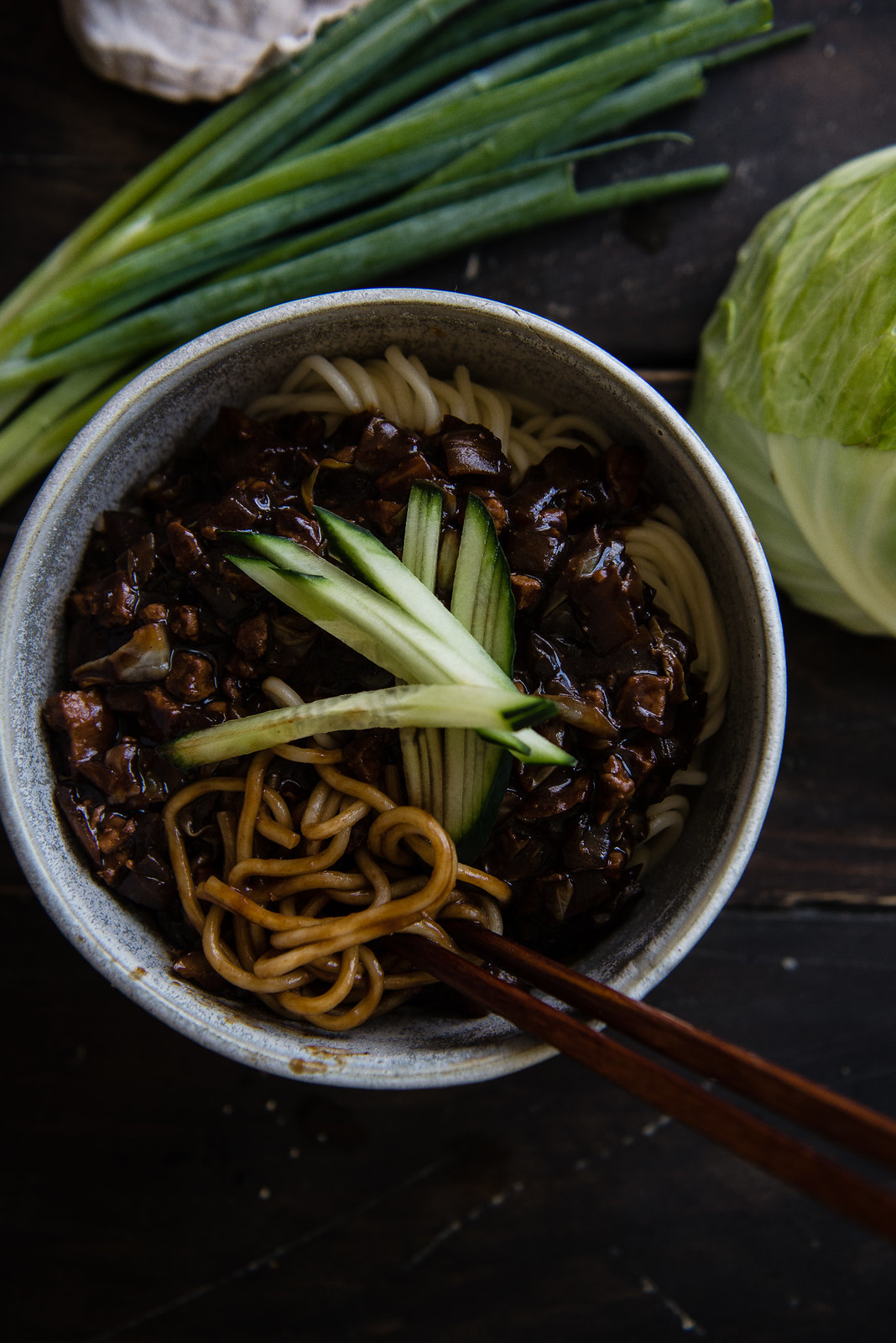
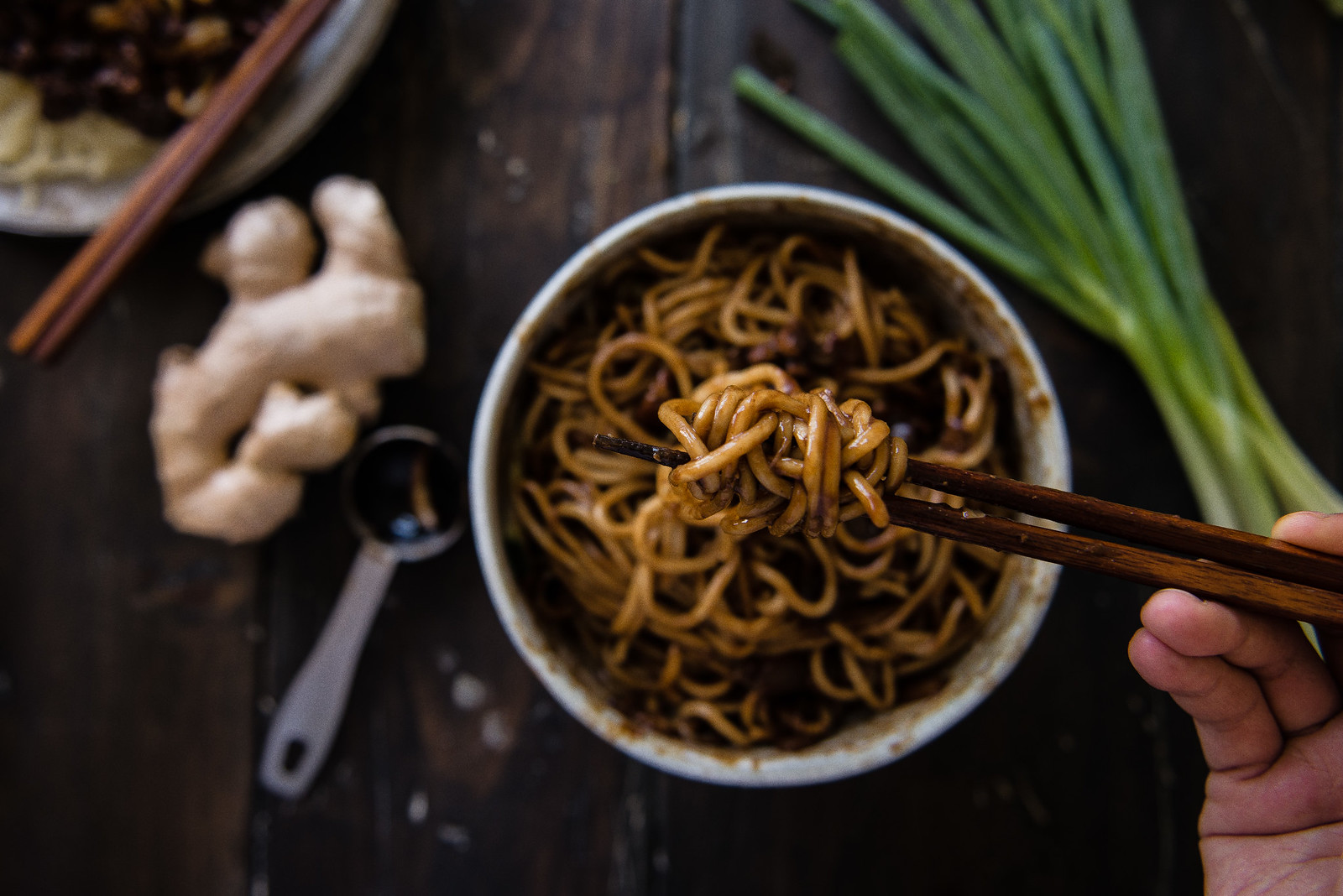
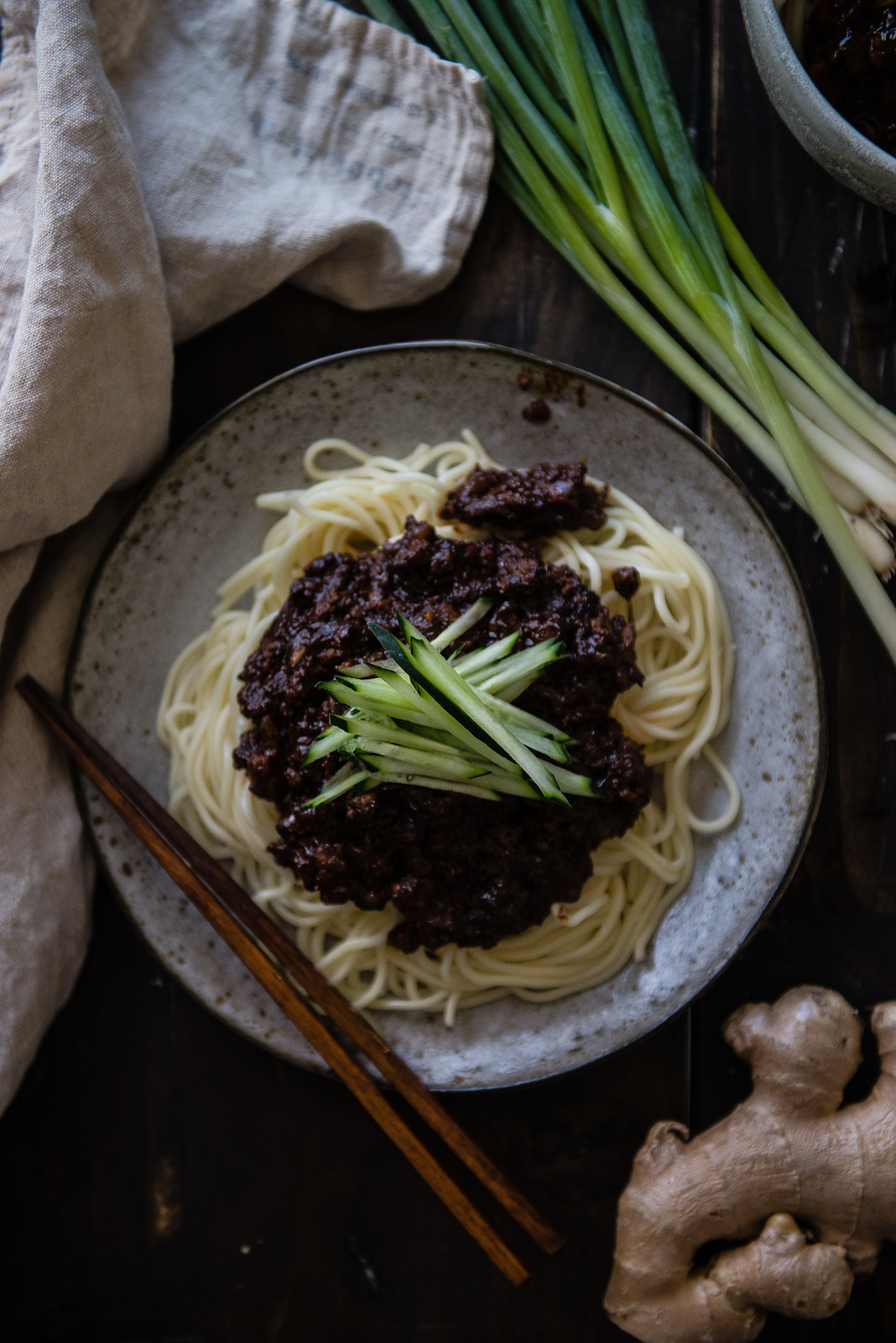
My Mother’s Zhajiangmian
Ingredients
2–3 tbsp dried shrimp (without shells; see Notes)
1–2 tsp vegetable or other neutral oil
1/4 cup sliced green onions
1 tsp minced garlic (about 1 large garlic clove)
1/2 tsp finely grated ginger
1/2 lb ground pork or beef
1 tsp rice wine or sake
6 tbsp sweet bean sauce (tianmianjiang; here is an example)
2 tbsp peanut butter (sesame paste also works)
1–2 tbsp spicy chili broad bean paste (doubanjiang; look for pixian doubanjiang for the highest quality, but more common brands like Lee Kum Kee will do you just fine)
1 lb fresh Chinese or Korean wheat noodles (see Notes)
julienned cucumber, for garnish (optional)
Instructions
- At least an hour ahead, soak the dried shrimp in a small bowl of warm water (enough to submerge the shrimp fully) to soften them and better release their flavor.
- Bring a large pot of water to boil for the noodles. You won’t want to salt the water for the noodles — zhajiang sauce is quite salty, and will add more than enough flavor.
- Meanwhile, make the sauce: Heat a few teaspoons of oil — just enough to coat the skillet or wok — until shimmering. Add the green onions, minced garlic, and ginger, and sauté briefly for 5-10 seconds. Drain the dried shrimp and add them to the skillet, along with the ground pork and rice wine, and continue to cook, stirring to break up large chunks, until the ground pork is cooked through. (Note: You may want to drain some of the fat from the ground pork at this point, depending on how much renders out.)
- Add the sweet bean sauce, peanut butter, and chili broad bean paste and continue to stirfry until smooth. You may want to add a tablespoon or two of water to thin the meat sauce to your liking. Turn the heat to its lowest setting to keep the sauce warm, or remove from heat and set aside while you finish cooking the noodles.
- When the water for the noodles comes to a boil, add the noodles and cook according to package directions. Usually I find that fresh varieties cook in no more than a few minutes. Drain and rinse the noodles to get rid of excess starch and to make them a bit chewier. Divide evenly between three or four bowls, top with the zhajiang sauce and julienned cucumber (if desired), and enjoy immediately.
Notes
- My mother’s recipe is a bit unconventional; she likes to depart from traditional zhajiangmian in a few ways. The spicy chili broad bean paste adds a bit of heat that is not always present in most versions, and, more unusually, my mother also likes to add peanut butter to her recipe, which adds a creamy sweetness, reminiscent of sesame noodles, that I love. It’s a quirk that I haven’t seen in many other recipes, but I find it completely addictive and a vivid reminder of home.
- Both zhajiangmian and jajangmyeon will require specialty ingredients that may be a little hard to find, with zhajiangmian a bit more involved than its Korean counterpart. If you can’t find tianmianjiang, or “sweet bean sauce” (also sometimes “sweet flour sauce”), you can try hoisin sauce instead, though it will be a bit sweeter. I’ve combined Korean chunjang with hoisin sauce in equal parts for a very good substitute.
- If you can’t find dried shrimp, a few ounces of minced fresh, raw shrimp will work well, too — just add them when you add the pork and cook until pink. Shell-on dried shrimp is not ideal here.
- On noodles: Most any fresh Chinese or Korean noodles will work here, and even spaghetti, in a pinch. Our favorite kind looks like this — tinged a bit yellow, square-cut, and packaged in bundles. The noodles above are not this version (I was led astray, alas, by a sale.)
Jajangmyeon
Ingredients
2 tbsp vegetable or other neutral oil
1/3 cup Korean black bean paste (chunjang or jjajang; the best varieties I have tried usually come in black or brown tubs like these)
1 tbsp sugar
1/2 lb (8 oz) pork loin, diced
1 tbsp rice wine or sake
1 tsp minced garlic (about 1 large garlic clove)
1/2 tsp finely grated ginger
salt and pepper, to taste
1 large onion, diced
1/2 small head cabbage, chopped (about 4–5 cups)
1 cup chicken stock (or water)
1 tbsp cornstarch, dissolved in 2 tbsp of water
1 lb fresh Chinese or Korean wheat noodles (see Notes)
julienned cucumber, for garnish (optional)
Korean red pepper powder (gochugaru), for serving (optional)
Instructions
- Bring a large pot of water to boil for the noodles. Meanwhile, make the sauce: Heat the oil in a small saucepan over medium-high heat until shimmering. Add the black bean paste and sugar and stir to combine. Fry the paste for 2-3 minutes, stirring constantly. Drain the oil from the paste and reserve to use with the pork; set the paste aside.
- Heat the oil again in a large skillet or wok. Add the diced pork loin, rice wine, garlic, ginger, and a gentle seasoning of salt and pepper to the pan, and cook until no longer pink. Add the onion and cabbage, then continue to cook until the vegetables just begin to soften, a minute or two.
- Add back the black bean paste and stir until the vegetables and pork are coated. Add 1 cup water and let simmer for 3-4 minutes. Add the cornstarch slurry and stir to combine, then cook for 1-2 minutes longer, or until sauce thickens. Turn the heat to its lowest setting while you make the noodles.
- When the water for the noodles comes to a boil, add the noodles and cook according to package directions. Usually I find that fresh varieties cook in no more than a few minutes. Drain and rinse the noodles to get rid of excess starch and to make them a bit chewier. Divide evenly between three or four bowls, top with the jjajang sauce and julienned cucumber (if desired), and enjoy immediately, with red pepper powder on the side if desired.
Notes
- On noodles: Most any fresh Chinese or Korean noodles will work here, and even spaghetti, in a pinch. Our favorite kind looks like this — tinged a bit yellow, square-cut, and packaged in bundles. The noodles above are not this version (I was led astray, alas, by a sale.)
- Many other recipes call for zucchini, mushrooms, daikon, or other vegetables, but B2 swears by the On Dong version, which uses only cabbage and onion alongside the pork.
- This recipe makes quite a bit more jajang sauce than its zhajiang counterpart — where zhajiang sauce can be quite salty and concentrated, so that you’ll only need a dollop or two for a big bowl of noodles, zhajiang sauce is smoother and meant to coat the noodles generously.

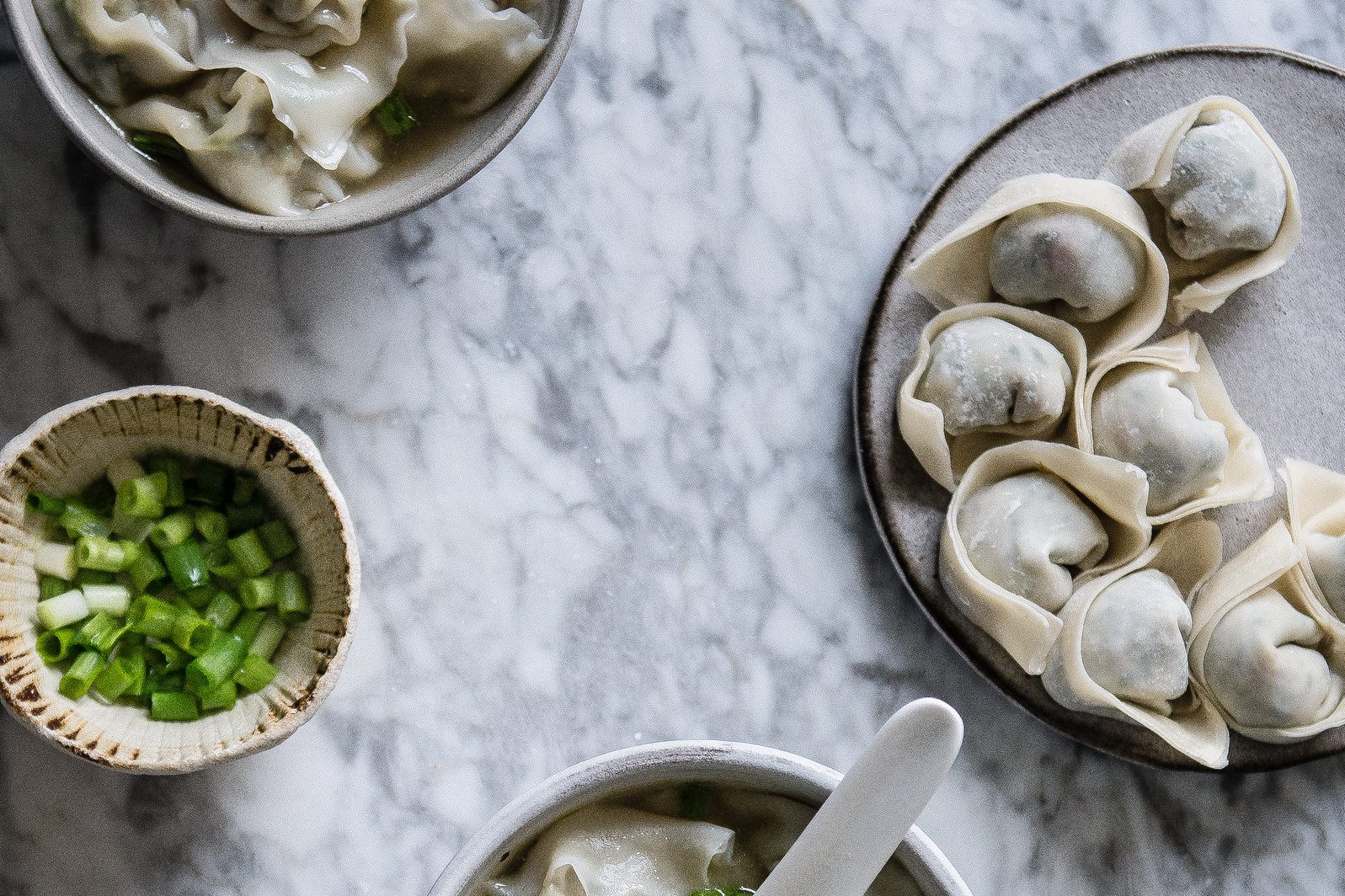

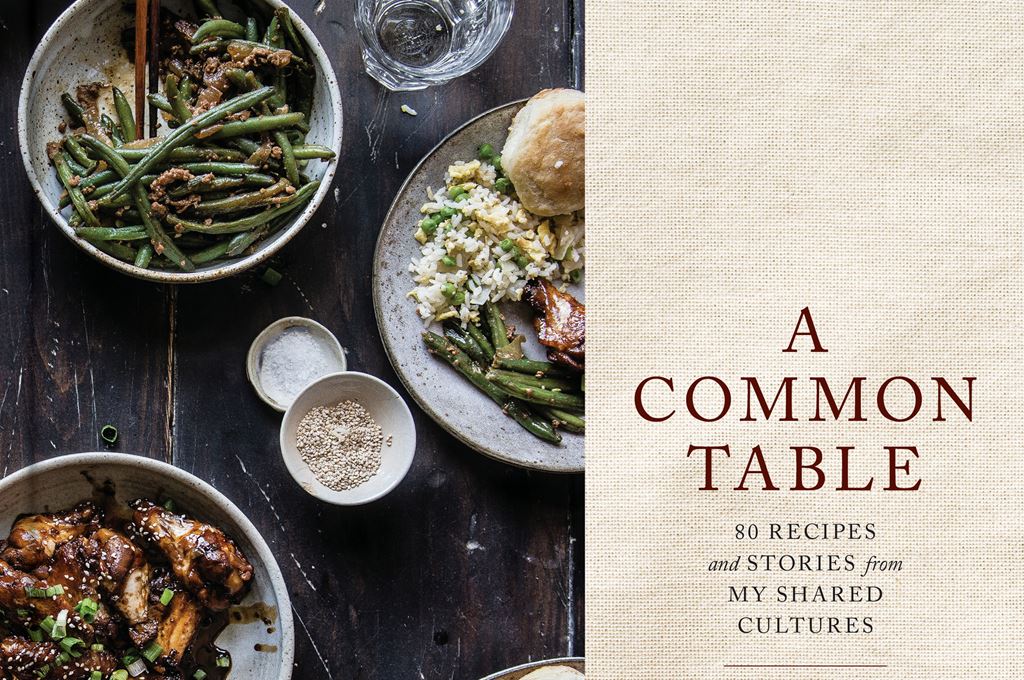
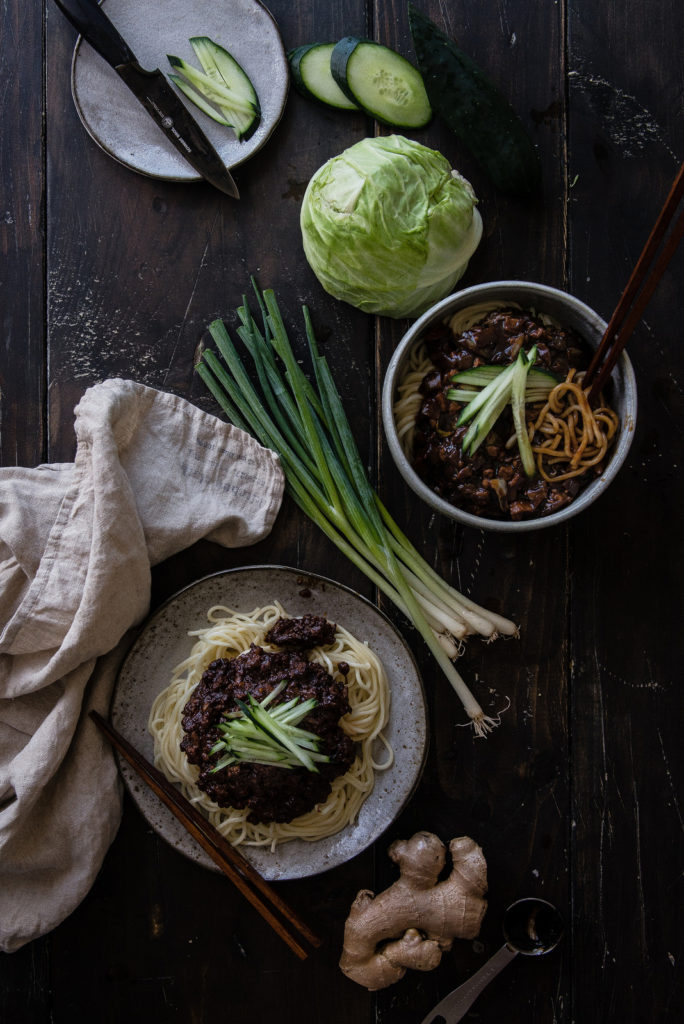
originalapplejunkie
I love reading your stories and trying your recipes (that are *always* ah-mazing) and I cannot wait to try these! Oh! And the impending arrival of B3 is super exciting! Love from London, UK! 🙂
tworedbowls
Thank you so much for such kind words!! They mean so much. 🙂
Susan H
Thank you for these wonderful recipes. I’m looking forward to trying them but I would like to find the authentic products at my Super H store. Am I likely to find them there? If so, would you please post pictures of the tianmianjiang and dried shrimp products you use? Thank you!!
tworedbowls
Hi Susan, thank you so much for commenting! Here is a brand of tianmianjiang, and while I don’t have a recommendation for an exact brand of dried shrimp (they tend to vary from store to store), this is a good up-close photo of what they should look like — unshelled, very small, and just slightly orange-pink.
Assuming that the Super H is a Korean supermarket, I’m not sure that you’ll be able to find tianmianjiang there, since it’s a fairly Chinese-specific ingredient. You might be able to find dried shrimp (though I usually see shell-on at the Korean markets, rather than unshelled) but I don’t think I’ve ever seen tianmianjiang. Still, when I haven’t been able to find it, I’ve mixed equal parts Korean chunjang (which you should definitely be able to find at Super H — they come in little black or brown tubs like these, labeled “fermented black bean paste” or “chunjang”) and hoisin sauce, with very good results — hoisin sauce is very close to tianmianjiang in flavor, just a bit thinner and sweeter. You can also use minced fresh shrimp in place of dried shrimp. I hope that helps!
Susan H
Thank you for your wonderful detailed reply. This will help me immeasurably. I do have access to a large Chinese market as I live in Northern Virginia just outside DC, The Great Wall. If there is another product you also recommend, please point me there! This is great fun learning what to look for in the markets in order to create these delicious dishes. Thank you for sharing your families recipes.
Amanda | What's Cooking
Very beautifully and honestly written. I think for me the very issue you talk about has been the biggest part of my own debate, “should we do this? When?” I think you adapt to having the extra little one around. And when life is good you can’t imagine it getting better but it can. I think it’ll bring out new beautiful parts of both of you. Thanks for your honesty and these beautiful homespun dishes. You guys are going to be great.
Rachel Heffington (@Rachelswhimsy)
I love the mental/emotional/heart place this recipe springs from. It’s so special and unique. God bless your sweet little B3!
heather (delicious not gorgeous)
zha jiang mian is such a comfort food for me too! i usually don’t add dried shrimp (or pb!) when i make it, but i love the sound of it and will have to try it out next time my zha jiang mian cravings hit. sending warm wishes to you guys!
Sherrie
You are the sweetest and most loving wife and mama to be. This post moved me to pieces. And I totally missed the announcement that you moved to California (unless this is the announcement, lol). That’s wonderful for you both. All my love all the time, Cynthia! xxx
Michelle @ Hummingbird High
aw. this post made me a little teary. excited for you guys and your growing family!
C
In the zhajiangmian, when do you add in the shrimp? I see the step to soak it but am not sure at what point during cooking you’d put it in.
tworedbowls
Thank you so much for catching this! The dried shrimp should be added along with the pork. My mistake — I’ve updated it now. Thanks again!
Katie
Congratulations on B3 🙂 As someone hoping to start a family soon, this strikes a sweet note for me. As does the adapting of family recipes–my family’s Chinese, so while these dishes are unfamiliar to me I love the idea.
Tori//Gringalicious
Wow, congrats!!!! This dish look amazing by the way, oh, and your photos are always so lovely!!!
wallflourgirl
This post was so, so beautiful–I soaked up every word of it! It also testifies to what I love most about your writing–the ability to tie your love for food, narrative, and personal life together so seamlessly. Nostalgia is never a bad thing, as long as it doesn’t lead to suffering or detract from the joy that you take in the present. I love the idea that there can be many different narratives that each of us leads–none of them any more a part of us than the other, but just distinct enough that we can recognize when one ends and a new one begins. Here’s to the best-case scenario and lots of wonderful days to come, filled with nostalgia and new memories, for you and your two wonderful bowls!
courtney | fork to belly
Omg Cynthia, these noodles are everything. I also kind of love that there’s not 10 different Chinese spices and sauces to add because that section in my pantry is completely packed… and can I just say again how much I adore your writing in these kinds of posts – my heart feels oh so full reading this and I am so so so happy for you and B2 and little B3 on the way!!!
Bowl Number 2
The quarter Irish is the beer I had with the meal, haha. 😉
Joan | Grist and Greens
I can related to this post so much. Beautifully written. It captures a lot of the thoughts going through my head these days as we try to decide if we want to start a family or not. We love our together time so much and adding a third would be a huge, though exciting, change. Thanks for writing this and the noodles look delicious! The difference in my household between the dishes would be the noodles. I love the wheat noodles, my husband is more of a fan of lighter rice noodle dishes.
Helen
Hi! I love the new look of your website, but it seems like I can’t see this recipe! Any way to fix this?
tworedbowls
Oof, so sorry about that!! It should be back now. Thanks so much for the kind words and for catching that, Helen!
Cory You
Whoa this blog is ridiculously cool!!
Marissa
I just found your blog and stumbled upon this recipe. I’m of Chinese descent and my husband is Korean American. We also live in LA. Like you, we had the same discussion about Zhajiangmian and Jajangmyeon and noted both the similarities and differences.
I love to cook and I’m so excited to find a blog like yours that blends authentic Asian recipes with Western ones, with plenty of unconventional twists that adds flavor and depth to the dish. I haven’t encountered people who cook like that in real life, it’s comforting to know that they exist! I hope to meet you some day, but in the meantime, I just wanted to let you know that you are absolutely inspirational. Thank you for the blog and please keep up the good work!
tworedbowls
Hi Marissa! I can’t tell you how much this comment meant to me to read! Just like you, I LOVED hearing about how you’re also a mix of unique cultures just like we are. I’m looking forward to the day (hopefully soon) when it won’t be rare to encounter people who cook like us in real life 🙂 . Thank you for such kind and thoughtful words, and I hope we get to meet someday too!